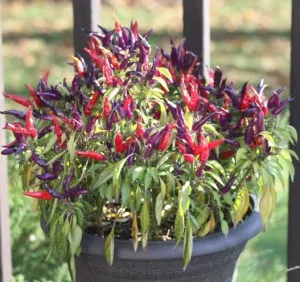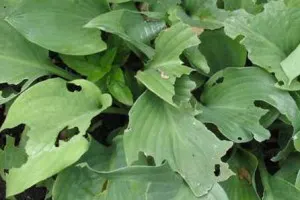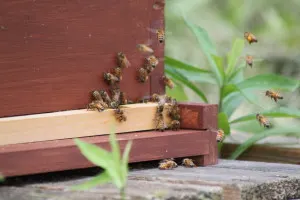This time of year – most of the questions that come to us are centered around plants in the vegetable garden – and what might be the cause of this or that symptom. We thought for this week’s gardening post – we would cover the 4 most common questions we get asked – along with some remedies to help resolve the issues. So here they are:
Question #1 “My plants look fantastic – They are healthy and dark green – but I have no blooms or veggies.”

This pepper plant has tons of deep green foliage, but no blooms or peppers – a classic case of too much fertilizer
If your plants are thick and full of lush vegetation and foliage – but you have little or no blooms and hardly any fruit at all – then the culprit is most likely too much fertilization. In a garden setting, you can certainly have too much of a good thing – and too much fertilizer leads to all growth in the leaves and stems and no fruit or veggies. No matter if you use organic or synthetic fertilizers – do so only during the first 6 week’s of the plant’s growth – about once every 10 to 14 days. This gives the plants the boost they need – but keeps the plant from using all of its energy to keep making leaves and not the coveted veggies that follow.
Question #2: “My plants look like shredded cheese but I don’t see bugs or insects.”
One of the biggest pests in the garden can be the common slug – and sometimes they are gone by the time morning has turned into daybreak – making it near impossible to find them. Leaving you to wonder who or what made the swiss-cheese like holes in your plants. The culprit is usually slugs. To combat slugs – beer traps work well. A small amount of beer placed in a flat saucer or lid – and the slugs will crawl in and drink themselves to death. A better way to protect though is to keep your plants pruned up off the ground to discourage easy access for the slugs to make their way up onto the leaves. Coffee grounds around the base of each plant also really help to deter them – they don’t like crossing over them at all!
Question #3 “My plants are turning yellow at the bottom and are starting to look sick.”

Yellowing leaves – like you can see at the bottom of this potted plant, can be a sign of too much water. Potted plants can show this symptom quickly.
When you begin to see the foliage of plants turning yellow – and there are no other obvious signs of stress or duress – it is usually a case of too much water for the plant. This can be common among potted plants that may not drain well or get too much hand watering. We like to use rocks or twigs in the base of our potted plants before putting soil in to help leave space for water to drain away. And for your garden, it may more than just too much artificial watering. Some soils, especially if they are heavy in clay – hold in water for long periods of time – so if you have too much rain – it can lead to the same stress. For that – begin to add lots of compost to your soil, or even mix in some sand for heavy clay soils. This allows for better drainage. Remember as a general rule of thumb – plants need about an inch of water per week.
Question #4: “I have healthy plants, and lots of blooms, but I never get any fruits or vegetables to form on the plants.”
Unlike the problem of over-fertilization – for this you might be getting plenty of blooms – but no resulting fruit or vegetables. It is usually a sign of a pollination problem. Unfortunately, it is becoming more and more of a problem around the country as our best source of pollination – the honey bee – struggles to stay alive. The honey bee has really suffered mass losses, and many think it is due to the ever increasing use of pesticides. Whatever the reason – a lot of blooms but no resulting fruit is usually a sign of low numbers of pollinators in the area. There are other pollinators that can help – butterflies, other types of bees, and so forth. You can help out your chances by adding additional flowering plants and shrubs that will attract more to the area. Or, like in our case, you can take up the hobby of bee-keeping! 🙂
Happy Gardening! – Mary and Jim!
If you would like to receive our DIY & Gardening Tips every Tuesday – be sure to sign up to follow the blog via email in the right hand column, “like” us on Facebook, or follow us on Twitter.


